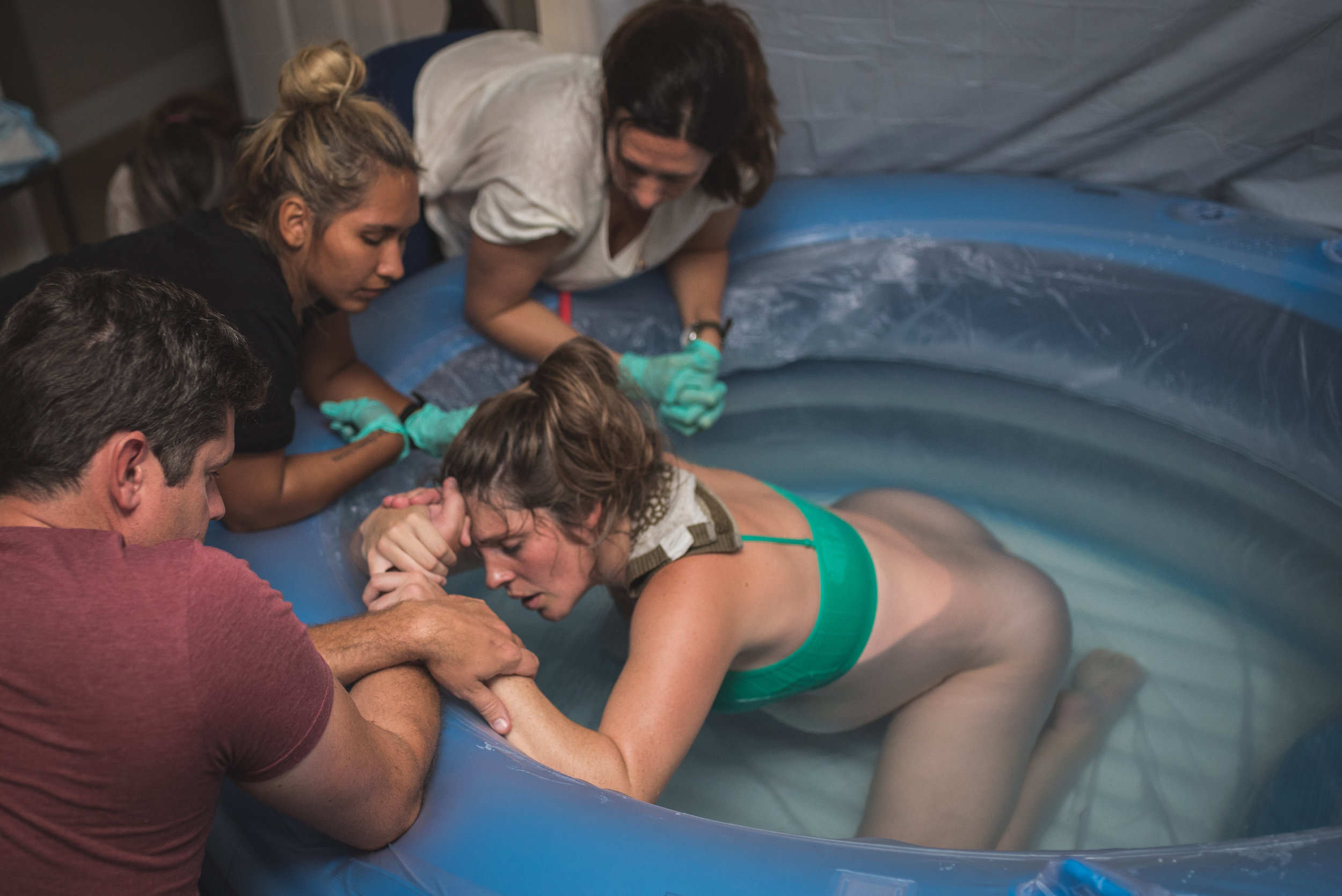Having a water birth was not previously on my radar. Although my midwife is not the kind of person who pushes, she gently explained the benefits of a water birth and sent me home with a bunch of pamphlets.
.jpg)
Trusty Google was another helpful tool; I turned to reading countless accounts of women narrating their experiences of having a water birth. It was enough to convince me that I would have a water birth if my labor progressed naturally and at a good pace.

On my last visit to my midwife, I confidently told her that I would use water for pain relief during labor but that I would get out of the water when the baby was about to be born.

There are many women who feel that entering a hospital system for their births limits them to a medicalized and impersonal experience. Many of these women believe that birth is a sacred and momentous occasion and should be approached with reverence and respect.

When birthing outside the context of a hospital, perhaps at home or in a birth center, it is becoming more popular to use water during labor to relax the mother’s muscles and to ease the pain of contractions, in addition to actually birthing the baby into it.
While water births may appear to be a new movement, they have been practiced for centuries around the globe, from Japan where women labored in the sea to Finland where women delivered in saunas. In the U.S., it started gaining more momentum in the 1980s, as information regarding its advantages became more widespread.
Advantages of water birth
Using water during labor and birth provides increased comfort for the laboring woman and a gentler transition for the baby to the outside world. Advantages include:
- Easier mobility so that the mother can assume any position that is most comfortable for her.
- Pain relief.
- Weightlessness in water.
- Warmth and softening of the tissues and ligaments, facilitating an easier birth and fewer tears.
There is ample research that indicates that the length of labor is reduced and there are less chances of requiring medical intervention when a woman is allowed to be mobile and is made to feel comfortable and supported during her birth experience.
Common concerns

That being said, the immediate concern of people who are not familiar with water birth is the possibility of the baby drowning.
Sadiyah Sayed, a private doula from Johannesburg, South Africa who has attended numerous water births says, “These are valid concerns but under the guidance of a trained midwife and doula, water births are safe.”
:upscale()/2016/10/25/640/n/24155406/8aacaf31c0663e8b_Photos-Water-Births.jpg)
She explains that two main things cause a baby to breathe when they are born. One is a change in temperature and the other is a change in pressure from inside the birth canal to the outside world. Both of these things are not extreme in a water birth. The water is constantly maintained around a comfortable 37° Celsius so that there is no great change in temperature.
Also the pressure at the bottom of a bath is greater than the pressure of air so there is no significant change in pressure either. As a result, a baby will not take a breath until it makes contact with air. Babies instinctively know not to breathe while their heads are still submerged underwater. They wait until they reach the surface of the water before breathing.
:max_bytes(150000):strip_icc()/gettyimages-111649233-43d990a79a9444989156bda0ab1fbaef.jpg)
Since it is possible for a small amount of fluid to reach the baby’s lungs, salt is added to the water to make it more like body fluid so that it is easily absorbed. Once born, the baby is gently brought to the surface and placed on the mother’s chest.
A good caregiver will monitor the water and situation on a constant basis and gently asks the woman to leave the water if it becomes contaminated with blood or the baby’s stools, as this might risk an infection to baby or mother. Water baths and pools should be properly cleaned before and after birth.